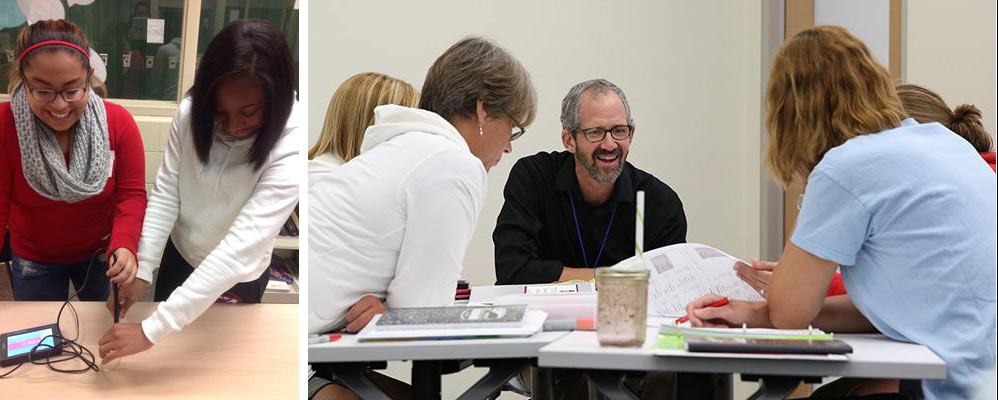
What are biofuels? How can they help us meet our future energy needs while minimizing negative environmental impacts?
With support from the Great Lakes Bioenergy Research Center (GLBRC) at UW-Madison, students in freshman biology classes at Monona Grove High School have been learning how to answer those questions through a process called bioprospecting.
Bioprospecting is the process of discovering new products based on resources found in nature. You may be familiar with drug discovery as a form of bioprospecting; for example, certain species of plants have been investigated as possible cancer treatments. Students at MG used bioprospecting to find species of wild yeast or bacteria that may be useful for producing ethanol as a biofuel.
Most of us have probably seen gas pumps where fuel made with ethanol is an option. Ethanol is a type of alcohol, a substance made of carbon, hydrogen and oxygen. Ethanol is produced is by microorganisms – tiny living things that include fungi, like yeast. Like humans, microorganisms use sugar for energy. But unlike humans, microorganisms have the option of undergoing fermentation to harness sugar’s energy, converting sugar into ethanol and carbon dioxide (hence the carbonation in fermented beverages like beer). If you’ve ever used yeast to make bread, you’ve carried out fermentation, too. Humans have been using fermentation for thousands of years to make foods. And recently, there has been a lot of interest in using fermentation to make ethanol as fuel.
Our students’ hunt for ethanol began with collecting some samples from school grounds likely to contain wild yeast: bits of soil, bark from trees and even rotten apples from the trees outside the main entrance became part of our investigations. Students then added two different food sources, or feedstocks, to their samples: table sugar and grass.
Just like humans, wild yeast and bacteria are able to digest the sucrose found in table sugar more easily than the complex cellulose sugar found in grass. However, finding ways to make ethanol from sugar sources like cellulose found in corn husks could be very useful (partly to avoid competing with human food sources, like corn). Add a little warm water, and voila: the process of fermentation begins.
Over the course of several weeks, students used ethanol probes supplied by the GLBRC to measure the amount of ethanol generated in their samples. No surprise: it was easier to generate ethanol using table sugar than it was using grass as the feedstock. But we found potential ethanol-generating organisms in unexpected places such as the soil and bark in our schoolyard, and became more familiar with this important area of research happening just across the lake at UW-Madison.
I was fortunate to participate in the GLBRC’s Bioenergy Institute for Educators in the summer of 2014, learning about ways to integrate biofuels education into K-12 curriculum. Students in biology classes with Christy Frontier, Tyler Kuehl and Mandi Peterson also participated in our bioprospecting adventures. I also spent that summer as an apprentice in the lab of Dr. Chris Hittinger at UW through the National Science Foundation’s Research Experiences for Teachers program, where I learned how to do the genetics work required to identify the species of wild yeast, which may ultimately prove useful for biofuels production.
Students in the biotechnology and microbiology course in spring 2015 will have the opportunity to participate in this exciting research.
To learn more about the GLBRC’s research and education work, visit https://www.glbrc.org/.
Sarah Wright teaches, biology, chemistry, and biotechnology and microbiology at Monona Grove High School.